How to repair the shock absorbers of a washing machine: a step-by-step guide
In matters of restoring the technical capabilities and operability of household appliances, we are used to relying on service centers. However, not all breakdowns require the mandatory intervention of a master. Many minor problems can be easily repaired with your own hands.
One of the typical examples is the repair of shock absorbers of a washing machine, which can be carried out independently. We will talk about how to dismantle worn parts of the depreciation system and install new elements. Our recommendations will help to quickly and efficiently restore the operation of the washer.
The content of the article:
Typical Causes of Breakdowns
Depending on the settings, the brand of the unit and the functions performed, the washing machine drums perform per minute from 700 to 1800 revolutions. Such an impressive load, and even with the application of a rotational force, can easily disable contacting parts, weaken the nodes and connections.
If shock absorbers were not developed to dampen the vibration of the drum and its tank during the spin cycle, the machine would have to be repaired after each new washing session. Their purpose is no different from the functions of similar vehicle devices.
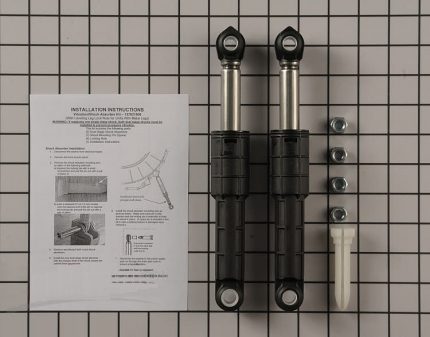
Shock absorbers coupled with suspension springs exclude direct contacts of the machine’s tank with its metal body, steel and plastic parts. In the form of peculiar supports, they are located under the main rotating body of technology, which is fixed by suspension springs in the upper part of the unit.
During operation, the washing machine supports and springs are unstable, so that the drum rotating at a frantic speed can slightly shift relative to its own position at rest.
Those.these devices, making spring movements, provide the drum with the ability to make the revolutions set by status, without transferring the load to adjacent parts and assemblies.
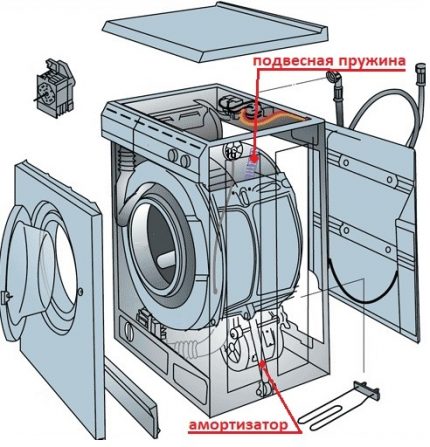
Structural components of the washing machine, protected from vibration by shock absorbers, serve much longer, less often fail. True, the shock-absorbing devices themselves during the execution of the assigned task gradually lose their original strength.
Retained appliances may require repair or replacement at an extremely inopportune moment, for example, before evening washing, the time of which does not allow you to call the master urgently. Or it will be necessary to wait for his arrival for a long time. This is where the information about the specifics of the restoration of shock absorbers and their device will be required.
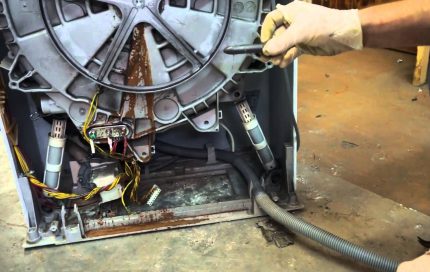
The device of spring shock absorbers
One of the most common shock absorbers for washing equipment has the so-called spring-piston design. If exaggerated, then this is a metal cylinder, at the top of which is a polymer sleeve. It directs the movement of the rod installed in the shock absorber.
The upper part of the rod is “sharpened” for planting polymer liners and gaskets made of rubber, with which it connects to the drum. A piston is attached to the stem base with a gasket fairly impregnated with a non-drying grease. This lubricant is needed to increase the friction force when the rod and piston move along the cavity of the steel cylinder.
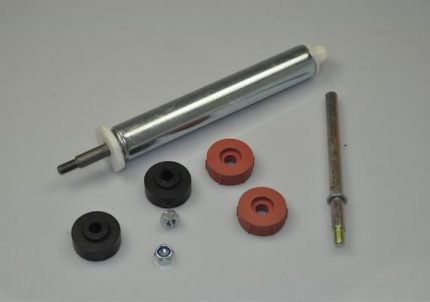
The operation of a spring-piston type shock absorber includes a series of sequentially repeated actions:
- With sharp fluctuations, the shock absorber rod is linearly driven.
- The piston pushed by the rod moves along the cylinder cavity.
- The impregnation prevents the piston from slipping without proper force.
- When the pressure decreases, the rod returns to its original position.
- When an effort occurs, everything repeats.
In order that the air available in the cylinder does not create additional resistance, the piston is perforated. When you press it, a possible air plug easily goes out through the holes made through through.
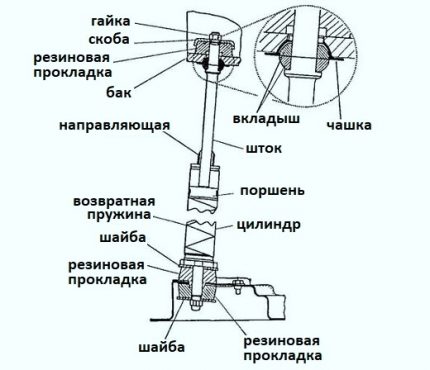
Of course, such a mode of operation does not give reason to hope for the eternal preservation of parts rubbing against each other in their original technical condition. At first, just play appears, then wear. Moreover, only one spring support can be damaged, and sometimes they are in different versions of washing units from 2 to 4 pieces.
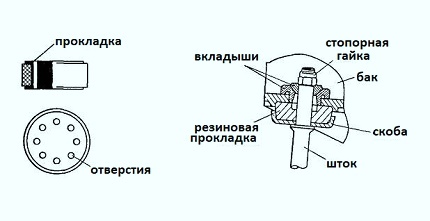
The principle of action of shock absorbers of washing machines of various brands is similar, but there are some design nuances. Their size, tilt angle, location may differ, not in all models of washing equipment they are supplemented with springs holding the drum on top.
Instead of a pair of suspensions located above, small springs can be used connected to the upper counterweight located nearby.
In other configurations, the tank, consisting of two parts, is supported by dampers instead of shock absorbers from below. This design type is classic, because the structure of these devices is also very worth understanding. It is possible that this is exactly your case.

Design features of dampers
Dampers in the device of washing machines are also used in combination with hanging springs, but there are no conventionally too strong elements in their structure. In fact, it is also a steel cylinder, though it is not a rod with a piston that moves through its cavity, but simply a piston with holes in the walls to remove excess air.
The damper piston is also equipped with a friction type gasket. It is made of a porous polymer and impregnated with a non-drying lubricant that creates additional friction. There may be two or even more gaskets in the damper, it all depends on the characteristics of the device.
Both the metal cylinder and the damper moving along its cavity along the outer edges are equipped with rubber bushings with which shock absorbing devices are connected to the bottom of the machine and to the tank.
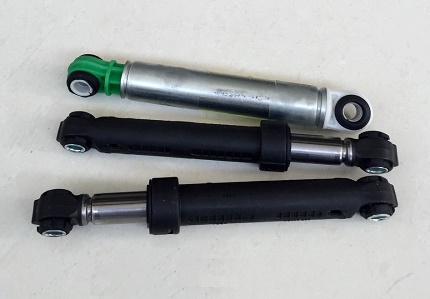
Dampers are available in two versions:
- Collapsible. To repair this variety, it is often enough just to replace the pressed gasket.
- Inseparable. Their edges are rolled. Repair of this type consists in replacing the device.
The values of the maximum allowable force possible for a particular shock-absorbing device are indicated on the bodies of dampers or shock absorbers. Typically, the load varies between 50 and 150 Newtons. When operating in a manufacturer-guaranteed mode, washing machines rarely exceed these limits.
When buying a new shock absorber for replacement, do not exceed the specifications indicated on the previous part. If 100 N is indicated on the case, then there is no need to flatter yourself about the fact that an element with 150 N will last longer; you need to purchase exactly the same or with close indicators.
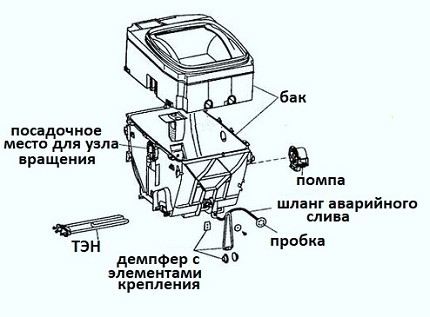
Diagnostics of typical malfunctions
The shock absorbing devices of washing machines belong to the mechanical part of household equipment. Their repair and replacement do not require fundamental knowledge in the field of electrical and even mechanics. So, even the intervention of an amateur will not be able to cause serious damage.
Note that for each model of the washing unit unique technical documentation is issued. Service tricks are usually authorized, devices are patented. However, there are common methods for repairing shock-absorbing devices that are common to almost all types of washing machines, the specifics of which are worth understanding.
The appearance of typical damages to shock absorbers or dampers is signaled by a specific noise arising from the operation of the machine, too much knocking inside its body.
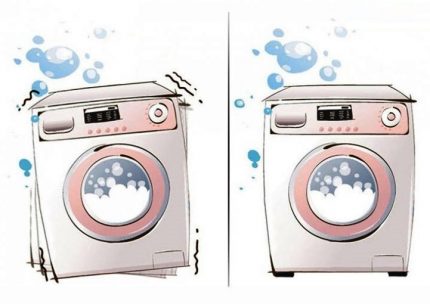
If alarming sounds are found, their condition should be studied, and for this it is necessary to provide yourself with access to the devices under test. Depending on the model, for the examination, you will need to remove either the top panel, or the side or back.
Diagnostic methods for shock absorbers for washing equipment depend on the type of load:
- From the front. If folds are formed when applying force to the tank from above on the sealing collar of the loading hatch, shock absorbers will be replaced. By the way, you can notice a couple of folds during the operation of the machine with worn out devices.
- With vertical. If, when a force is applied to the tank, resistance is not felt from above, and the tank continues to swing like a pendulum after interrupting pressing, it must be repaired.
During the diagnostics with top loading, it is necessary to pay attention to how much the tank sags when pressed, if the indicated defect takes place to be. It would be nice to track the fact of sagging and its conditional value with a full tank load.

It is imperative to check if there is at least some margin for the reciprocating movement of the tank of the examined washing machine. If it sags so that it simply does not have room for displacement during vibration, then a loud knock will appear during washing or spinning. And this is a sure sign of damage to the tank in the near future, and simply imbalance.
In the normal technical condition, in front-loading washers, cuff folds should not be observed at all, regardless of the function performed. Note that the formation of a single fold on this rubber seal indicates that only one of the shock absorbers is damaged.
If the creases on cuffs are not an indicator of damage to shock absorbers, which means that it has worn out or deformed from the use of substances undesirable for its structure. The seal should be replaced in this case.
For normally functioning units with an upper load, if the shock absorbing devices are not damaged, after applying force to the tank from above and abrupt interruption of the load, i.e. withdrawal of the hand, the tank should smoothly return to its original place without excessive swaying and vibration.
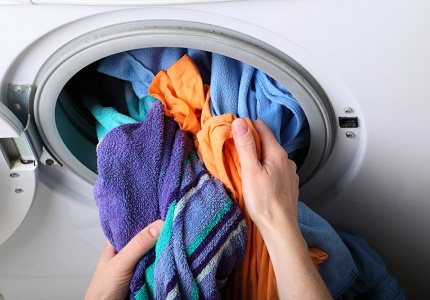
Step-by-step repair manual
A washing machine with a damaged shock absorber or a worn damper seal, of course, can still work for some time without carrying out repair operations.
But it should be remembered that without damping the vibration, some extremely important parts and mechanical systems may crack or disconnect. The tank and piston assembly suffer most from this.
Making a new gasket for the damper
If noise and hefty knocks are found in a washing machine with dampers, it is enough to change the gaskets. To do this, partially disassemble the machine and just unplug the fixture.
Then, according to the plumbing rules, it is necessary to simply cut out new gaskets from a PCB or a piece of rubber of suitable thickness. Then the gaskets are replaced.
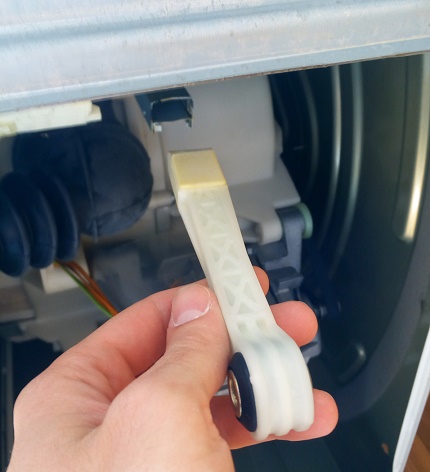
As a starting material for the independent manufacture of gaskets, a well-used rubber brake pad for a car is excellent. It is better to choose rubber by thickness according to the actual size of the gap between the tank and the shock-absorbing device.
The easiest option to replace shock absorbers
In the vast majority of situations, the shock absorbers of the washers are subject to exclusively complete replacement. Moreover, repairmen advise changing the entire kit, and not just one device.
The statements of experienced masters have logic. Indeed, in the working process, all shock absorbers wore out approximately the same.After replacing only one fixture during the washing / spin cycle, the oscillations will be damped unevenly, which will very soon lead to breakage and abrasion of previously undamaged elements.
If the broken device can simply be disconnected from the lower plane of the washing machine and from the tank, the work is carried out without much difficulty.
To make a replacement:
- We remove and remove the part of the body located on the side necessary for the repair.
- We dismantle the damaged and failed devices.
- We install a new kit and assemble the washer in the reverse order.
There are models in which the mount to the tank is made so that dismantling is possible only with this element. Owners of such equipment will have an almost complete analysis of the equipment before repair. In any case, before proceeding with the repair operations, it is worth looking into the data sheet and familiarizing yourself with the mounting features.
Repair and replacement with tank removal
To replace the dampers in such machines they have to be completely disassembled.
Having completed the disassembly of the case, we proceed to extract the tank of the machine, at the same time we clean the details from rust and calcium growths. We study the condition drum washer and troubleshoot if found.
In order not to get confused in the actions that will need to be exactly repeated in the process of reassembling, we fix all the steps with the phone’s camera.
The work is carried out in the following sequence:
- Remove the housing panel from above.
- We dismantle the box for loading liquid products and powder.
- We delete the control panel together with systems adjacent to it.
- Separate the springs holding the tank at the top.
- We remove the front panel and disconnect the functional units of the machine from the tank.
- We take out the tank with the dampers.
- We replace devices, if possible, we get off with gaskets replacement or repair.
- We assemble the machine, strictly adhering to the parsing sequence, only in the reverse order.
In order not to be mistaken in the assembly process, it is advisable to photograph the disassembly process.
For fasteners, it is better to make an auxiliary "organizer" with several cells that you can sign along the way.
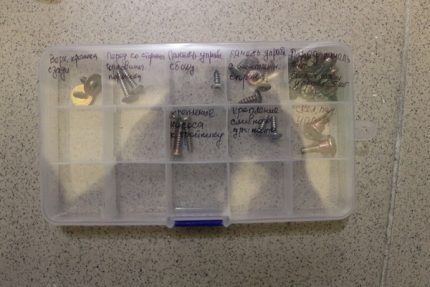
It often happens that when parsing a machine to replace shock absorbers, a number of emerging problems are identified, for example, the need for bearing replacement. Do not wait until a worn or damaged part creates a tangible problem. It is better to immediately, upon detection, to correct the technical condition of the unit.
Conclusions and useful video on the topic
Video # 1. Roller with detailed instructions for replacing shock absorbers:
Video # 2. Video demonstration of repair of dampers of the washing unit:
Video # 3. Shock Absorber Recovery Guide:
Without undue self-deception, we agree that for an inexperienced home master, the above repair operations can become a kind of problem. At first, the procedure itself will frighten the unknown, but all this tension will depress the performer only for the first time.
Self-made repairs will certainly become a useful experience, on the basis of which subsequently all actions will be performed easier and faster.
Tell us about how shock absorbers were changed in your own washer yourself. Share interesting technological nuances that will be useful to site visitors. Please leave comments, ask questions and post photos on the topic of the article in the block form below.

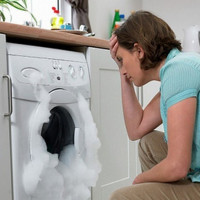 How to properly drain your washing machine: a step-by-step guide and valuable tips
How to properly drain your washing machine: a step-by-step guide and valuable tips 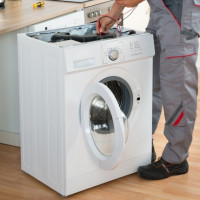 Samsung washing machine errors: how to understand the malfunction and repair
Samsung washing machine errors: how to understand the malfunction and repair 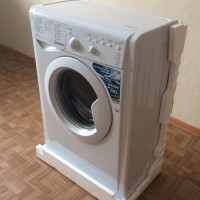 Indesit washing machine malfunctions: how to decrypt error codes and repair
Indesit washing machine malfunctions: how to decrypt error codes and repair 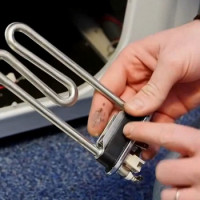 TEN for the washing machine: how to choose a new one and replace it yourself
TEN for the washing machine: how to choose a new one and replace it yourself 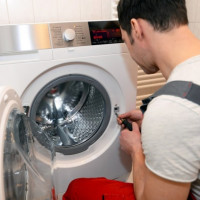 DIY Samsung washing machine repair: analysis of popular breakdowns and repair tips
DIY Samsung washing machine repair: analysis of popular breakdowns and repair tips 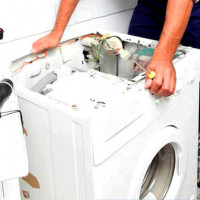 Do-it-yourself Indesit washing machine repair: an overview of common problems and how to fix them
Do-it-yourself Indesit washing machine repair: an overview of common problems and how to fix them  How much does it cost to connect gas to a private house: the price of organizing gas supply
How much does it cost to connect gas to a private house: the price of organizing gas supply  The best washing machines with dryer: model rating and customer tips
The best washing machines with dryer: model rating and customer tips  What is the color temperature of light and the nuances of choosing the temperature of the lamps to suit your needs
What is the color temperature of light and the nuances of choosing the temperature of the lamps to suit your needs  Replacement of a geyser in an apartment: replacement paperwork + basic norms and requirements
Replacement of a geyser in an apartment: replacement paperwork + basic norms and requirements
Crazy brains ... Need a viscous PMS liquid, not sunflower oil!
Alexander, what kind of oil are we talking about ?! Did you repair the shock absorbers of the washing machine at least once? Or at least watched from afar? I use machine oil, my hobby is to repair washing machines (and not just shock absorbers, if that). The advice on fixing the phasing of work on the camcorder is excellent, but this is when you work not alone, but it is better to take a photo (if the process is not already debugged before the automatism).
Alexander, let me disagree with you. Recently changed in his LG F1403TDS5D. At the same time, I decided to add grease to the shock absorbers. As a result, the drum began to be scared. Shock absorbers have lost their damping properties. I had to reassemble the shock absorbers and wipe the grease dry. After that, the drum stopped sausage. The machine is working fine. But just in case, I ordered PMS 60,000 oil.
I received PMS 60,000, lubricated shock absorbers. The effect is great! It began to spin smoothly, no rumble!
Is PMS 60000 silicone? Is it sold in small quantities somewhere? Everywhere barrels offer. Why do I need 20 liters of lubricant is not clear.
PMS 60000 is a damper lubricant, in fact it is an organosilicon liquid polymer one or two-component compounds with high-quality bonds of silicon atoms in glycerol or silicone. According to folk silicone grease. It is usually sold in large volumes, but there is also retail sale in small syringes. It costs about 1.5 dollars per syringe.
Question. Why in Margarita 2000 Ariston two sets of holes for attaching the eyelets of the lower silent block of the shock absorber?
And what letters does the model have? For example, on the Ariston Margherita 2000 AL109X there are only two holes (I attach the photo). This provides a more reliable mount shock absorber. If this is the question, then everything is fine, as it should be.